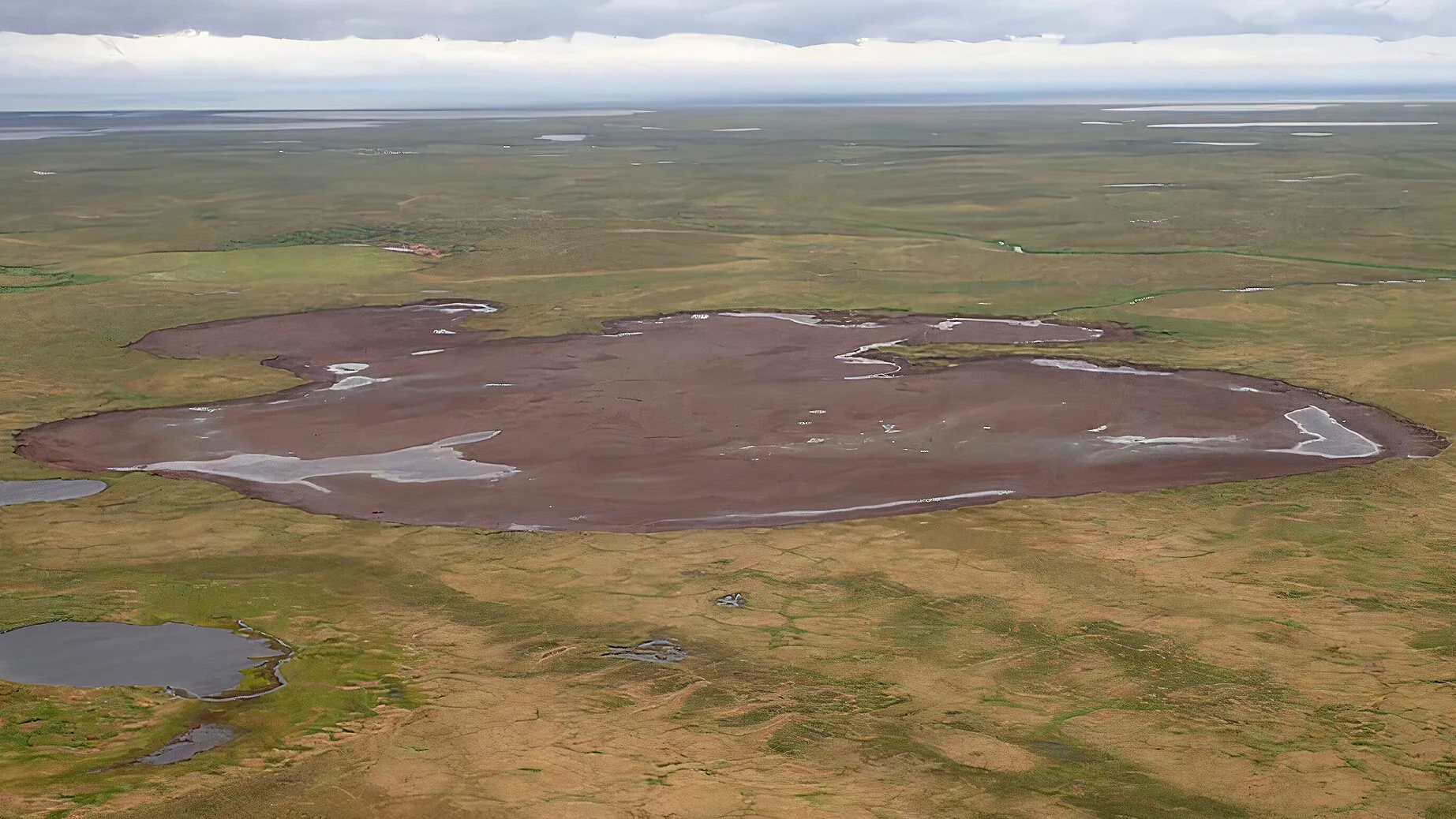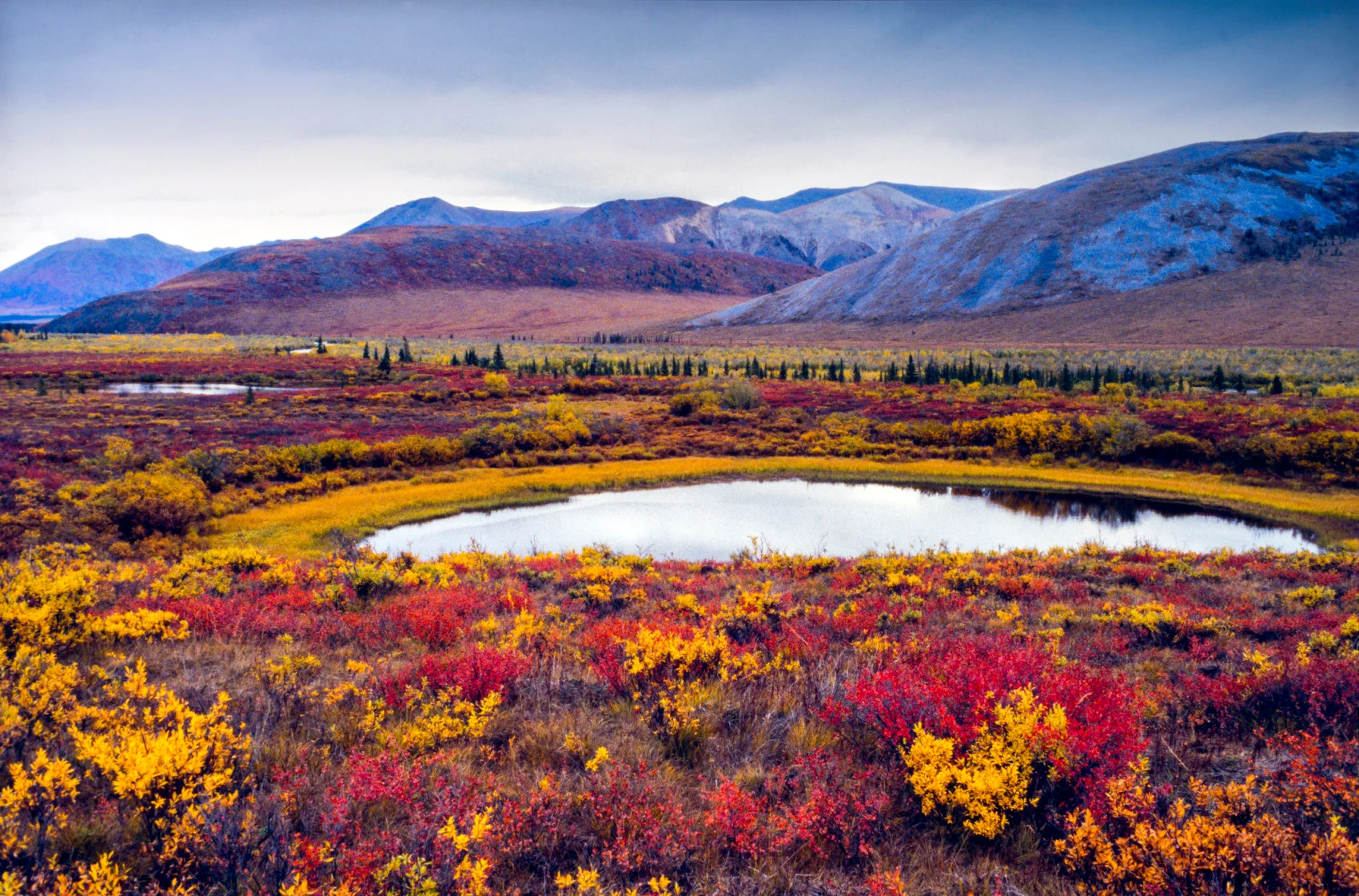
"Vanishing" lakes documented in the Arctic amid mass drying, scientists say
Increased rainfall levels during autumn can increase ground temperatures by up to 9°C, which stimulates permafrost thaw.
Research by scientists from the University of Florida reports an unexpected phenomenon: lakes are simply “vanishing” in the Arctic. The researchers say this discovery is surprising because initial climate change predictions suggested that lakes would expand due to melting ice in the ground before drying out in the mid-21st or 22nd century.
The study, published in Nature Climate Change, used satellite imagery and machine learning to document a mass drying trend in the northern regions of Canada, Alaska, Russia, Greenland, and Scandinavia.
“Our findings suggest that permafrost thaw is occurring even faster than we as a community had anticipated,” Elizabeth Webb, lead author and a postdoctoral researcher at the University of Florida, said in a press release.

Little lake in the Richardson Mountains during Arctic Autumn in August, Northern Yukon, Canada. (Pierre Longnus/ The Image Bank/ Getty Images)
This study adds to the coverage of the drastic changes that Arctic and Antarctic lakes are experiencing. In 2015 an unnamed lake near Fort McPherson, North West Territories collapsed into a valley after extensive permafrost thaw and caused widespread flooding. A “rare event” was then documented in Antarctica in 2019 when millions of cubic metres of water suddenly disappeared from an Antarctic ice shelf.
Atmospheric temperatures have risen more than twice the global average since 2000. The study stated that increasing annual air temperature and greater amounts of autumn rainfall lead to decreasing surface water of Arctic lakes mainly by stimulating permafrost thaw. The melting ground resulted in new drainage channels and increased soil erosion in the lakes, causing them to disappear.
See also: Disappearing lake in Antarctica leaves scientists puzzled
Rainfall is warmer than the frozen ground and increases soil temperatures during autumn and promotes permafrost thaw. Autumn rainfall reaches deeper levels of the ground than during the spring and can increase ground surface temperatures by up to 9°C when the ground typically begins to freeze, which extends the thaw season by several weeks.
The study states that new drainage channels are possibly opened up by the heat that rainwater brings underneath the ground.
Watch below: Thawing permafrost splits trees, causes massive 'slump' in this part of Canada
The researchers found surface water on lakes in ice-rich permafrost areas had a steeper decline as opposed to areas with a lower ice content, which indicates the significant influence of the deeply frozen Arctic regions that have not yet started to melt.
“Permafrost soils store nearly two times as much carbon as the atmosphere,” Webb stated. “There’s a lot of ongoing research suggesting that as permafrost thaws, this carbon is vulnerable to being released to the atmosphere in the form of methane and carbon dioxide.”
Freshwater lakes are essential resources for humans and ecosystems in the Arctic. Remote and Indigenous communities rely on freshwater lakes as a source of drinking water and the study states that there will be a negative impact on human livelihood as the lakes shrink. Fish, migrating birds, and other wildlife are also expected to suffer from this disappearing resource.
“The snowball is already rolling. It’s not going to work to keep on doing what we’re doing,” Webb stated in the press release when asked about minimizing the impacts global warming has on the Arctic.
Thumbnail image: This large lake in Alaska is nearly completely dry after a major drainage event during the summer of 2018. (National Park Service/ David Swanson)

